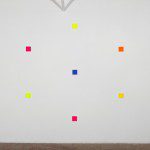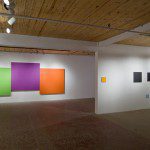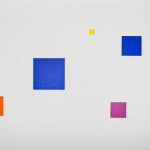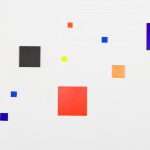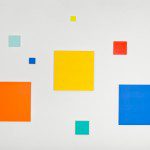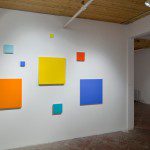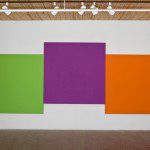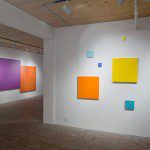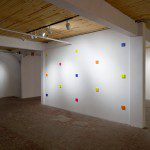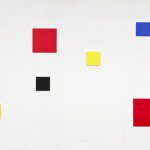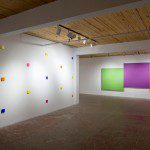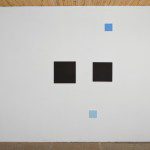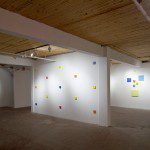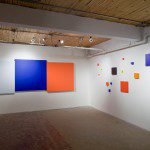Claude Tousignant: Périphériques et Retables
Text by Sevan Injejikian
During an era where the end of painting was declared and revoked, Claude Tousignant’s artistic production has continued to plumb the aesthetic potential of geometric abstraction. With a career that spans six decades, Tousignant’s approach dialogues with pioneers of abstract art while finding new ways to expand on the aesthetic concerns of his practice.
Part of the generation of the Plasticiens, Tousignant has blurred the boundaries between sculpture and painting.1 His turn to the monochrome and his unwavering commitment to it since the 1980s has allowed him to explore spatiotemporal concerns that are informed by modernist tenets of art. By using form and colour to “flatten” the picture plane, ridding it of any illusion of depth and shifting the focus onto its frontality, he has extended painting into space thus bringing it, as Andria Hickey has noted, into the sculptural field.2 His approach has also brought the work into the realm of the spectator.
In the Peripherique series (2010-2011) – which is a nod to Piet Mondrian’s grids – a number of monochrome paintings are installed directly onto the gallery wall and form the overall composition of each work. Tousignant’s play with colour and scale in the juxtaposition of various canvases creates a tension between the whole and its parts. When discussing his work in the past, Tousignant has explained that his interest lies in “the events that take place between the spectator (perceiver) and the object [artwork].”3 In the abovementioned series, the tension created between the monochrome paintings and the work’s physical inclusion of the exhibition space impacts the spectator’s perception. It engages the senses as the individual paintings compete for one’s attention, and underscores the interrelationship between artwork, exhibition space, and spectator. The ‘white cube’ of the gallery becomes an intrinsic part of the work and oscillates between architectural space and picture plane, gallery wall and canvas. The visual interdependence of the work and the exhibition wall points to how the gallery space not only frames the work but constitutes it.
When contemplating Tousignant’s work, one cannot help but wonder how his aesthetic concerns continue to resonate today. Viewed in a contemporary context where the “white cube” of the gallery is no longer seen as “neutral” or “blank”, the contested space of the art institution is not necessarily addressed but nevertheless becomes manifest. While his approach is rooted in modernism, Tousignant’s nod to pioneers of abstract art strikes a chord with debates that remain current – the authority of the art institution in the formation of knowledge and the assessment of value when it comes to art.
1. Mark Lanctôt, “The Elusive Monochromes of Claude Tousignant,” Claude Tousignant, Paulette Gagnon, et al., (Montréal : Musée d’art contemporain de Montréal, 2009) 206-213.
2. Andria Hickey, “Modulateur luso chromatique. Space: Ocular, Occupied,” Invitation 2, no. 2 (Nov-Dec 2006): 6. See also Lanctôt 206 – 213.
3. Normand Thériault, Claude Tousignant: a text in two parts (New York: 49th Parallel, 1987): 22, as quoted in Hickey 6.


